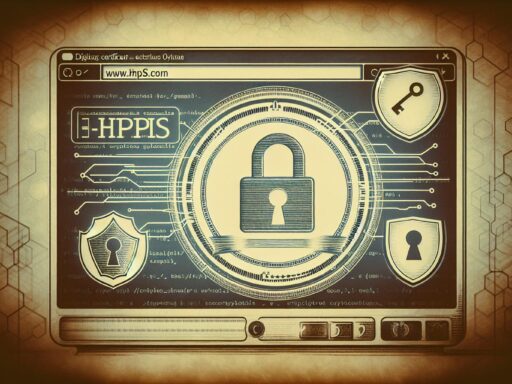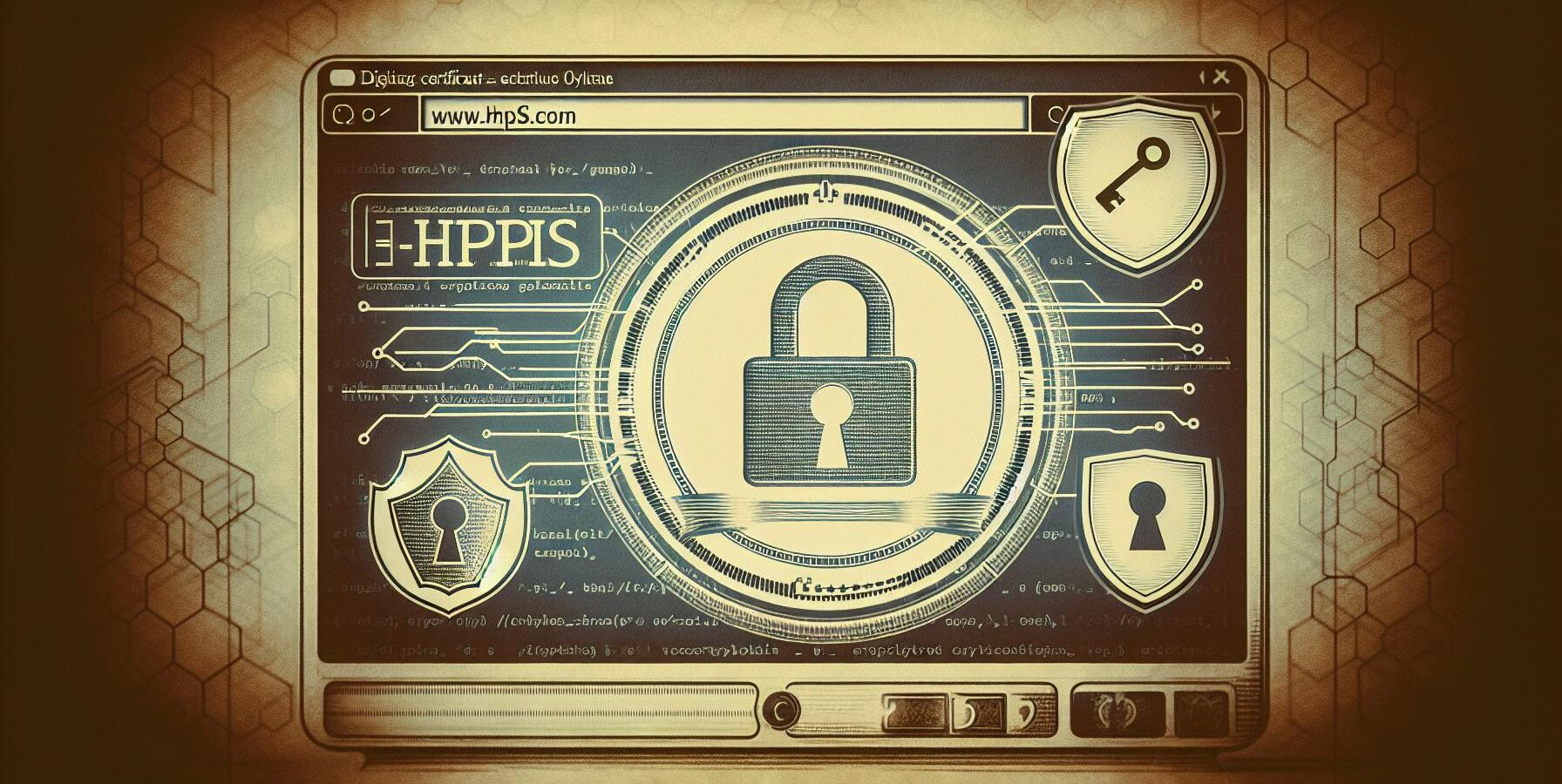In today’s digital world, security and trust are paramount, and digital certificates play a crucial role in ensuring both. A digital certificate acts much like an online passport, verifying the identity of websites, individuals, and devices to enable secure communication over the internet. Without these certificates, online transactions and data exchanges would be vulnerable to breaches and fraud.
Digital certificates use a combination of encryption and authentication to safeguard information. They are issued by trusted entities known as Certificate Authorities (CAs), which validate the credentials of the certificate holder. This process ensures that when users connect to a website or send an email, they can be confident the other party is who they claim to be. Understanding digital certificates is essential for anyone looking to navigate the internet securely and protect sensitive information.
Understanding Digital Certificates
Digital certificates are electronic documents used to prove the ownership of a public key. They facilitate secure communication online by ensuring that both parties in a transaction are authenticated.
Components of a Digital Certificate
- Public Key: The public key encrypts data and is shared with others.
- Issuer: The Certificate Authority (CA) that issues and verifies the certificate.
- Signature: The digital signature of the CA ensures the authenticity of the certificate.
- Validity Period: The dates during which the certificate is valid.
- Subject: The entity that owns the certificate, such as a website or individual.
Types of Digital Certificates
- SSL/TLS Certificates: Encrypt data between web servers and browsers.
- Code Signing Certificates: Validate the authenticity of software, ensuring it hasn’t been altered.
- Email Certificates: Secure email communications by encrypting and signing email content.
- Client Certificates: Authenticate clients to servers, often used in business environments.
Role of Certificate Authorities (CAs)
CAs are trusted entities that issue digital certificates. They validate the identity and credentials of the certificate applicant before issuing the certificate. Examples include:
- Let’s Encrypt
- DigiCert
- Comodo
Encryption and Authentication
Digital certificates use encryption to protect data transmitted between parties. They ensure confidentiality by encrypting the data with the recipient’s public key. For authentication, the sender’s digital signature is used to verify their identity.
Common Uses of Digital Certificates
- E-commerce: Ensures secure transactions on online shopping sites.
- Email Security: Encrypts emails to protect sensitive information.
- Enterprise Security: Protects internal communications within a business.
- Software Distribution: Confirms the legitimacy of software updates and downloads.
Importance of Validity and Trust
Certificates rely on trust, which CAs establish. They must be renewed before expiration to avoid disruptions. An expired or compromised certificate can lead to security vulnerabilities and loss of trust.
Importance of Digital Certificates
Digital certificates play a crucial role in enhancing security and establishing trust in digital communications.
Security Enhancement
Digital certificates enhance security by encrypting data transmitted over the internet. Encryption converts readable data into an unreadable format, ensuring that only authorized parties can access the information. This is vital in protecting sensitive details, such as credit card numbers and personal data, from cyber threats. Certificates also facilitate secure socket layer (SSL) and transport layer security (TLS) protocols, which provide a secure channel for data transmission between servers and clients.
Trust Establishment
Digital certificates establish trust by verifying the identities of websites, individuals, and devices. Issued by Certificate Authorities (CAs) like Let’s Encrypt and DigiCert, certificates include a digital signature that confirms the authenticity of the certificate holder. This validation process ensures users that they are interacting with legitimate entities. Trust establishment is essential in online transactions, where the assurance of identity boosts user confidence and reinforces the security of interactions.
Types of Digital Certificates
Several digital certificates exist to enhance online security and trust. Each type serves a specific purpose, utilizing encryption and authentication for secure communication.
SSL/TLS Certificates
SSL/TLS certificates secure web communications between browsers and servers. SSL (Secure Sockets Layer) and TLS (Transport Layer Security) encrypt data, ensuring that information remains private. Websites with these certificates display HTTPS in the URL, indicating a secure connection. SSL/TLS certificates come in various validation levels, including Domain Validation (DV), Organization Validation (OV), and Extended Validation (EV). DV certificates provide basic encryption, while EV certificates offer the highest level of trust by verifying the business’s legal identity.
Code Signing Certificates
Code signing certificates authenticate software and code. Developers use these certificates to sign their applications, which helps users verify the software’s authenticity and integrity. When users download signed software, their systems check the digital signature to ensure it hasn’t been tampered with or altered. This process boosts confidence in the software and protects against malware. Examples include Microsoft Authenticode and Java Code Signing certificates.
Email Certificates
Email certificates secure email communications by encrypting messages and attachments. By using S/MIME (Secure/Multipurpose Internet Mail Extensions), email certificates also enable digital signatures, verifying the sender’s identity. This helps prevent phishing attacks and ensures message integrity. When recipients receive an email with a digital signature, they can trust that the email hasn’t been altered and originated from the claimed sender. Popular providers include Comodo and Symantec.
Client Certificates
Client certificates authenticate individual users to servers in enterprise environments. Businesses use these certificates to verify employees’ identities when they access company resources. Client certificates ensure secure connections and protect sensitive data by preventing unauthorized access. They often integrate with existing security systems, like VPNs and single sign-on solutions. Examples include Microsoft client certificates and Cisco client certificates.
How Digital Certificates Work
Digital certificates function through a system that ensures secure data exchange and identity verification online.
Public Key Infrastructure (PKI)
Public Key Infrastructure (PKI) is the foundation of digital certificates. It consists of protocols, services, and standards that manage keys and digital certificates. PKI uses asymmetric encryption, involving a public key and a private key. The public key encrypts data while the private key decrypts it. Without a proper PKI, digital certificates can’t provide the required level of security.
Certificate Authorities (CAs)
Certificate Authorities (CAs) are trusted entities that issue digital certificates. They verify the identity of applicants before issuing a certificate, ensuring the information in the certificate is accurate. Examples of renowned CAs include Let’s Encrypt and DigiCert. CAs maintain the integrity of the certification process and are critical in establishing trust in digital certificates.
Obtaining a Digital Certificate
Obtaining a digital certificate involves several steps, ensuring the authenticity and security of online interactions.
Application Process
Individuals or organizations must first determine the type of digital certificate needed, such as SSL/TLS for websites or code signing for software. They must then select a trusted Certificate Authority (CA) from providers like Let’s Encrypt or DigiCert. Applicants must provide relevant information, including organization name, domain name (if applicable), and contact details. Many CAs offer online forms for this process, simplifying the submission of required data. It’s essential to accurately fill out these forms to avoid delays in issuance.
Verification and Validation
Certificate Authorities perform a thorough verification before issuing a digital certificate. For domain-validated (DV) certificates, the CA verifies domain ownership, typically through methods like email confirmation or DNS record verification. For organization-validated (OV) or extended validation (EV) certificates, additional checks ensure the legitimacy of the business, such as reviewing government-issued documents, legal business registration, and phone verification. This rigorous process confirms the applicant’s authenticity, ensuring trust in the issued digital certificate.
Challenges and Limitations
Complexity of Implementation
Implementing digital certificates involves technical expertise. Organizations must set up Public Key Infrastructure (PKI), manage certificates, and handle key storage securely. Without skilled IT personnel, these tasks become challenging and error-prone.
Certificate Management
Managing certificates throughout their lifecycle can be overwhelming. Organizations must keep track of renewal dates, ensure timely updates, and revoke compromised certificates. Failure to do so risks expired certificates causing security vulnerabilities.
Cost Implications
Acquiring and maintaining digital certificates can incur significant costs, especially for larger organizations needing multiple types of certificates. Costs include purchase fees, renewal fees, and potential expenses for additional security measures.
Security Risks
Digital certificates themselves are not immune to security risks. If a certificate authority (CA) is compromised, all certificates issued by that CA are at risk. Additionally, private keys must be protected rigorously; if leaked, they can lead to data breaches.
Browser Compatibility
Not all digital certificates are compatible with every browser or device. Users may encounter issues accessing sites if their browsers don’t recognize the certificate. This can result in trust warnings, deterring users from proceeding and affecting user experience.
Legal and Compliance Issues
Different regions have varying legal and compliance requirements for digital certificates. Organizations must navigate these regulations to ensure their certificates are not only technically valid but also legally compliant. Non-compliance can result in legal consequences and fines.
Performance Impact
Encryption and decryption processes involved in SSL/TLS certificates can impact website performance. While modern hardware mitigates this, sites with high traffic volumes may still experience latency issues, affecting user experience and service efficiency.
Discover the Power of BlueNotary:
Integrate your Business, Title Company, or Law Firm to Satisfy your Customers and Decrease Turnaround
Get a document Notarized/Sign-up
Join the Free Notary Training Facebook Group
Conclusion
Digital certificates are indispensable in today’s digital world, ensuring secure and trustworthy online interactions. They act as online passports, verifying identities and protecting data through encryption and authentication. By leveraging Public Key Infrastructure (PKI) and trusted Certificate Authorities, digital certificates maintain the integrity and security of online transactions.
Their applications span across various domains, from securing websites and emails to authenticating software and enterprise users. Despite challenges like implementation complexity and cost, the benefits of digital certificates in safeguarding sensitive information and establishing trust far outweigh the drawbacks. Understanding and utilizing digital certificates is crucial for anyone looking to navigate the internet securely.
Frequently Asked Questions
What is a digital certificate?
A digital certificate is an electronic “passport” that verifies the identities of websites, individuals, or devices, enabling secure communication online. It is issued by trusted Certificate Authorities (CAs) and utilizes encryption and authentication to protect data and verify identities.
Why are digital certificates important?
Digital certificates are crucial for ensuring the security and trustworthiness of online transactions. They protect against data breaches and fraud by encrypting information and verifying the identities of parties involved in digital communications.
What are the main components of a digital certificate?
The main components of a digital certificate include the public key, issuer, digital signature, validity period, and subject. These elements work together to confirm the identity of the certificate holder and secure data exchanges.
What types of digital certificates exist?
There are several types of digital certificates, including SSL/TLS certificates for web security, code signing certificates for software authenticity, email certificates for secure email exchanges, and client certificates for authenticating users in business environments.
How do SSL/TLS certificates secure web communications?
SSL/TLS certificates secure web communications by encrypting data transmitted between a user’s browser and a website. This encryption is indicated by the presence of HTTPS in the URL, ensuring that data remains private and protected from cyber threats.
What role do Certificate Authorities (CAs) play?
Certificate Authorities (CAs) are trusted entities that issue and validate digital certificates. They verify the identity of applicants through thorough checks, ensuring the accuracy and trustworthiness of the information contained within the certificates.
How do digital certificates enhance security?
Digital certificates enhance security by encrypting data transmission over the internet, verifying identities, and protecting data from unauthorized access. This ensures that sensitive information, such as personal details and financial transactions, remains secure.
What are common uses of digital certificates?
Common uses of digital certificates include securing e-commerce transactions, protecting email communications, ensuring enterprise security, and authenticating software distribution. These applications help maintain the integrity and trust of online interactions.
How can one obtain a digital certificate?
To obtain a digital certificate, one must select the appropriate type of certificate and a trusted Certificate Authority. The process involves providing relevant information, undergoing thorough verification, and ensuring compliance with CA requirements.
What challenges are associated with digital certificates?
Challenges include the complexity of implementation, managing certificate renewals and revocations, cost implications, potential security risks such as CA compromise, browser compatibility issues, and navigating legal and compliance regulations. Effective management and expertise are essential to address these challenges.








